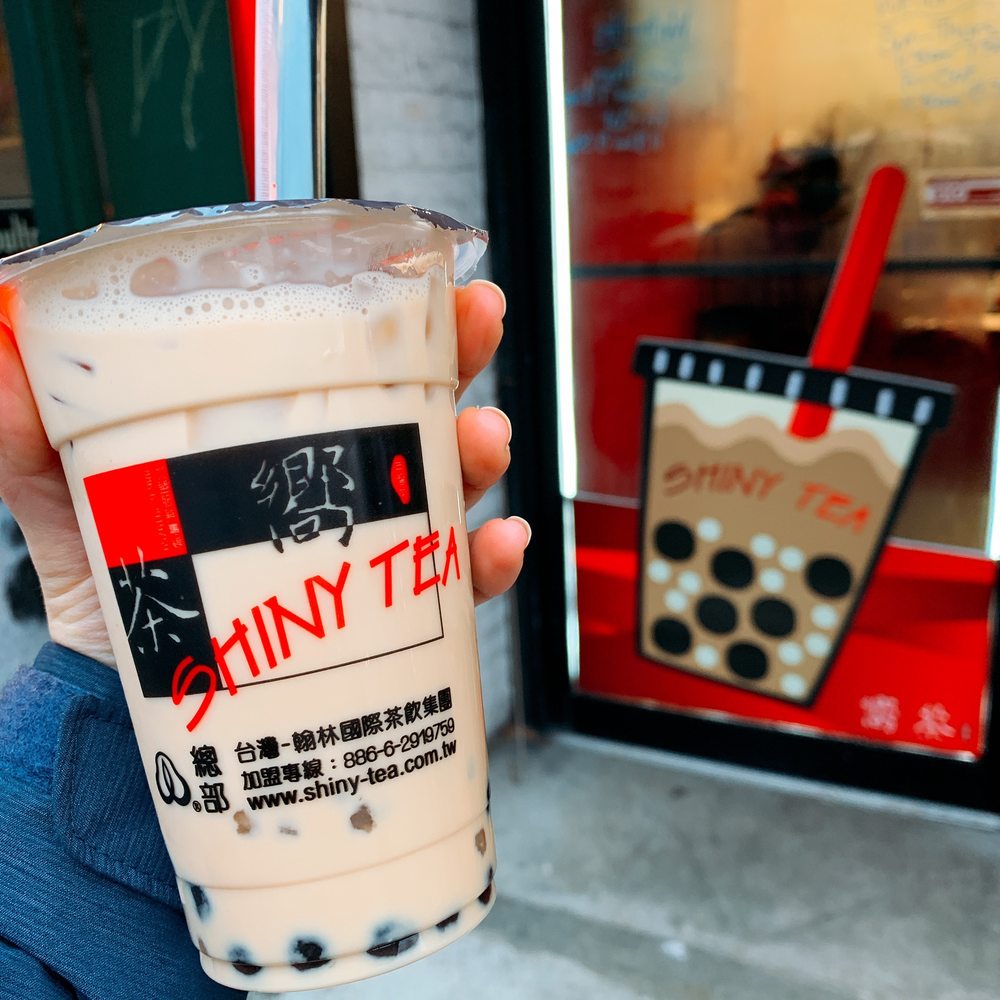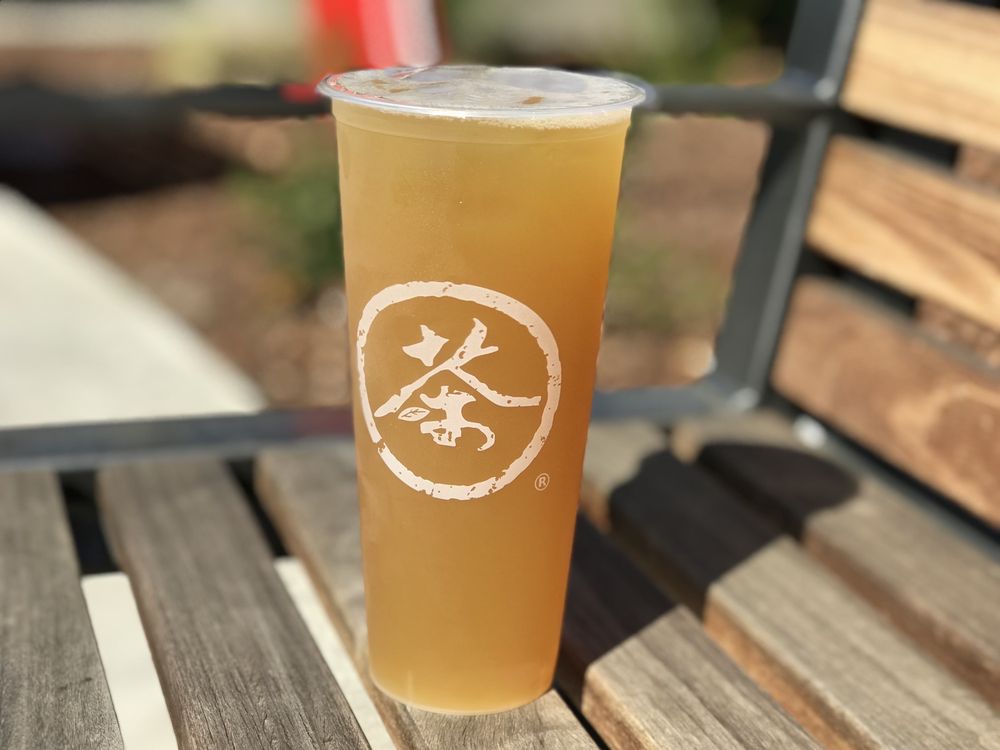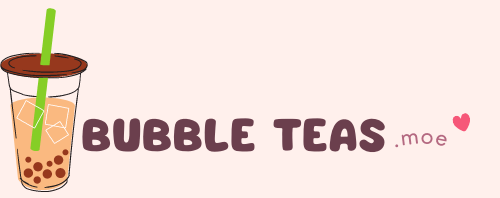Navigating the world of FODMAPs can be tricky, especially when you’re craving something sweet like boba. If you’ve been wondering whether you can indulge in this trendy drink while sticking to a low FODMAP diet, you’re not alone.
I’m diving into the chewy world of boba to uncover if it fits into a low FODMAP lifestyle. So, before you sip on your next bubble tea, let’s explore what you need to know about boba and your digestive health.
Is Boba Low FODMAP Diet Friendly?
When you’re on a low FODMAP diet, it’s vital to scrutinize everything that goes into your mouth, and I mean everything. So, let’s talk about boba. This trendy beverage, originally from Taiwan, typically consists of tea, milk, and those chewy tapioca pearls we all love. But the big question is, can those of us dealing with IBS indulge in this sweet treat without risking a flare-up?
Firstly, tapioca pearls are actually gluten free since they’re made from the starch of cassava plants. That’s great news because gluten can be a trigger food for many with irritable bowel syndrome. But FODMAPs are a different story. While gluten isn’t the issue here, when it comes to FODMAPs, it’s all about the carbs. The good news is, they’re pretty low in FODMAP content. This means that in small amounts, tapioca pearls should be easily manageable on a low FODMAP diet. However, portion control is key to avoid bloat and discomfort.
The other components of boba might not be as worry-free. Typical boba drinks include a milk base, which often contains lactose—a high FODMAP carbohydrate that can cause symptoms for those with lactose intolerance, a common issue among people with IBS. The solution? Opt for lactose-free or dairy free alternatives like almond or coconut milk to make your boba drink friendlier to your digestive system.
And then there’s the sweetener. Most boba teas are sweetened with high FODMAP sweeteners like honey or high fructose corn syrup. If you’ve got a sweet tooth, steering clear of these and going for a splash of maple syrup or a sprinkle of cane sugar can keep your boba within low FODMAP guidelines.
So to wrap this up, enjoying boba on a low FODMAP diet takes some tweaking, but it’s definitely not off the table. Just be mindful of:
- The type of milk used (dairy free is best)
- The sweetener (opt for low FODMAP options)
- Serving size (smaller portions to maintain a happy gut)

What is FODMAP?
Understanding FODMAPs
You’ve probably heard of FODMAPs, especially if you’re navigating the tricky waters of digestive sensitivities like irritable bowel syndrome (IBS). FODMAP stands for Fermentable Oligosaccharides, Disaccharides, Monosaccharides, and Polyols. These are short-chain carbohydrates that aren’t easily absorbed by the gut, which can cause discomfort for some folks. In essence, FODMAPs can be a real pain in the belly, especially for those dealing with IBS.
On a low FODMAP diet, you aim to minimize these troublesome carbs to keep your gut happy and bloat at bay. It’s not about cutting them out entirely – that’d be near impossible and not particularly fun. It’s more about finding a balance that works for your body.
Foods High in FODMAPs
So, let’s talk trigger foods. High FODMAP foods can kickstart symptoms for those with a sensitive gut. These can include certain fruits, like apples and pears, dairy products filled with lactose, and wheat-based goodies that contain gluten. Gluten itself isn’t a FODMAP, but many gluten-containing foods are high in fructans, a type of oligosaccharide.
Here’s a quick hit list of some common high FODMAP culprits:
- Garlic and onions
- Wheat-based bread and cereals
- Some legumes and lentils
- Milk, yogurt, and soft cheeses
- Foods sweetened with honey or high-fructose corn syrup
Switching to a low FODMAP diet often means embracing gluten-free and dairy-free alternatives, and keeping an eagle eye on food labels for hidden FODMAPs. Remember, it’s about reducing your overall FODMAP content, not eliminating it.
Choosing the right starch can also be a game-changer — cue the tapioca pearls. They’re a gluten-free and generally low FODMAP starch that’s kind to sensitive tummies. As for sweeteners, sucrose – good ole cane sugar – is your friend, being typically easier to digest.
When it comes to managing a low FODMAP diet, it’s all about making smarter choices – like finding the right balance between satisfying a boba craving and keeping your gut in check.
What is Boba?
Boba Ingredients
Boba, also known as bubble tea or pearl milk tea, typically includes a base of tea, milk, and chewy tapioca pearls. These pearls are what give boba its iconic texture and name. They’re made from tapioca starch, which is a gluten-free carbohydrate extracted from the cassava root. When I’m considering my low FODMAP diet, I’m particularly keen on inspecting each ingredient – and you should be too if you’ve got IBS or are sensitive to high FODMAP foods.
The traditional boba tea mix-ins like flavored syrups and sweetened condensed milk can be a red flag due to their high fodmap content. Sweeteners often contain high-fructose corn syrup or honey, which are major trigger foods for bloating and discomfort among those with irritable bowel syndrome. It’s not all bad news though. Opting for dairy-free alternatives and low FODMAP sweeteners can make your boba drink easier on the gut.
Boba Preparation
Preparing boba starts with cooking the tapioca pearls. I’ve noticed they need to be boiled until they reach the perfect balance between chewiness and softness – which is usually about 20 minutes. Then, they’re typically soaked in a sweet solution to enhance their flavor. But here’s where you’ve got to watch out: this soaking solution can sometimes include high fodmap sweeteners.
The tea, another central component of boba, is usually safe for my low FODMAP friends. Most teas, especially if they’re pure and not pre-mixed with high FODMAP additives, will steep beautifully and won’t upset a sensitive system. Milks used in boba can either be high or low in FODMAPs, so always choose lactose-free milk or a dairy-free alternative like almond or coconut milk to stay on the safe side of your low fodmap diet.
As a enthusiast of keeping my gut happy while enjoying the foods I love, I always take extra care with how I prepare my boba. Whether enjoying a store-bought treat or making it at home, knowing the fodmap content in each ingredient is crucial to prevent afterwards regrets. Tapioca pearls, when enjoyed in moderation and prepared correctly, can be a delightful addition to a balanced, low FODMAP diet. Just remember to stay mindful of those sneaky high FODMAP ingredients that might try to slip into your delicious drink.

FODMAP Content in Boba
High FODMAP Ingredients in Boba
When I’m sifting through the ingredients in boba, it’s crucial to identify the high FODMAP offenders that could be triggers for people like me, who have to keep a close eye on our digestive health. First off, the classic boba recipe can contain honey or high-fructose corn syrup, which are known for their high FODMAP content. I’ve learned that these sweeteners are a common source of discomfort and can lead to bloat for those with IBS.
Another potential problem is the milk. Standard boba calls for milk or cream, and these dairy products are often high in lactose – a big no-go for anyone following a low FODMAP diet. It’s surprising how many everyday items contain hidden FODMAPs, making seemingly harmless foods like boba a trigger food.
Impact of Boba on FODMAP-sensitive Individuals
For someone sensitive to FODMAPs, the reaction to drinking a regular boba tea can be pretty immediate. Even when I’m craving that chewy punch of tapioca pearls – thankfully gluten-free and a safer starch for a low FODMAP diet – I’ve got to be wary. These pearls alone are okay in moderation; however, combined with high FODMAP mix-ins, they can quickly complicate my quest for a gut-friendly beverage.
The real kicker is the cumulative effect. Each ingredient in boba might toe the line of FODMAP content individually, but mixed together, they can overwhelm my system. I’ve felt the impact firsthand – the bloat, the discomfort – and it’s clear how crucial it is to tune in to the FODMAP content of each component. That’s why I’m always careful to substitute with dairy-free and low FODMAP sweeteners when I’m in the mood for boba. It’s a balancing act, always reminding myself that monitoring my intake is key to managing symptoms of irritable bowel syndrome.
Alternatives for Low FODMAP Boba
Crafting a low FODMAP boba drink doesn’t have to be a daunting task. For those of us with Irritable Bowel Syndrome (IBS) or a sensitivity to high FODMAP ingredients, finding suitable substitutes is key to enjoying this popular beverage without the unwanted bloat.
Dairy-Free Milk Options
First and foremost, dairy products are a common high FODMAP trigger food. I can easily switch out traditional milk or cream with dairy-free alternatives like almond milk, lactose-free milk, or even rice milk. These are not only gentle on the gut but also add a unique twist to my boba experience.
Sweeteners That Are Kind to Your Belly
Sweeteners are often hidden sources of FODMAPs. Instead of honey or high-fructose corn syrup, I’ll reach for pure maple syrup or a dash of stevia. These low FODMAP sweeteners keep the sweetness I crave but ditch the discomfort.
Safe Tapioca Pearls and Other Add-Ins
The stars of the show, tapioca pearls, are naturally gluten-free and low in FODMAP content — a great bonus for my digestive system. However, I must be careful with other add-ins like fruit jellies or syrups that can ramp up the FODMAP levels.
- Fresh strawberries
- Kiwi
- Pineapple
These are fruits low in FODMAPs that work well with boba. When in doubt, I’ll stick with plain tapioca pearls to keep it safe.
Keeping an Eye on Portion Sizes
While I’m concocting my low FODMAP boba, I’ve learned it’s not just about the ingredients. The portion size plays a crucial role too. Even low FODMAP foods can trigger symptoms if I overindulge. So, I’m mindful to keep my servings reasonable—moderation is my friend.
This approach to adjusting boba for a low FODMAP diet ensures I don’t miss out on this delightful treat. It lets me join in the fun without the worry of triggering my IBS. Remember, it’s all about balance and making smart swaps to maintain gut health while still savoring all that boba has to offer.
Summarising Low FODMAP Boba in Bubble Tea
Crafting a boba drink that’s friendly to a low FODMAP diet is definitely doable. I’ve shared tips for choosing the right ingredients like lactose-free or almond milk and low FODMAP sweeteners. Remember, moderation is key—even with these adjustments. By being mindful of the ingredients and quantities, you can savor the unique experience of boba tea without the worry of aggravating your IBS. So go ahead and enjoy your customized low FODMAP bubble tea with confidence!
Frequently Asked Questions
Q: What are some low FODMAP alternatives to dairy in a boba drink?
A: You can use almond milk or lactose-free milk as dairy-free alternatives for a low FODMAP boba drink.
Q: What are some low FODMAP sweeteners to use in a boba drink?
A: Pure maple syrup or stevia are low FODMAP sweeteners that can be used in a boba drink.
Q: Are tapioca pearls low in FODMAP?
A: Yes, tapioca pearls are naturally low in FODMAP content and gluten-free.
Q: Should I avoid high FODMAP add-ins in my boba drink?
A: Yes, it’s recommended to avoid high FODMAP add-ins like fruit jellies or syrups for a low FODMAP boba drink.
Q: Is portion control important even with low FODMAP foods?
A: Yes, it’s important to practice portion control and moderation, even with low FODMAP foods in a boba drink.
Q: Can I enjoy boba without triggering my IBS symptoms?
A: By making adjustments like using low FODMAP alternatives and practicing portion control, you can enjoy boba without worrying about triggering your IBS symptoms.

